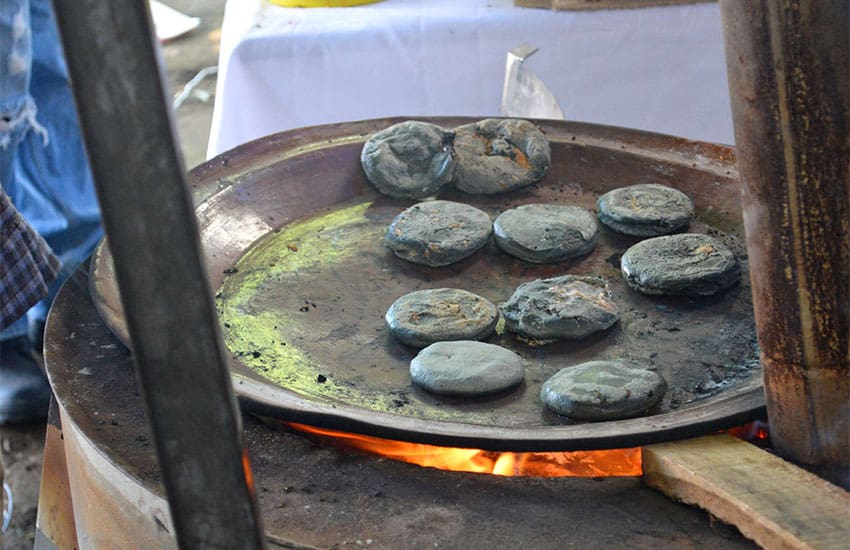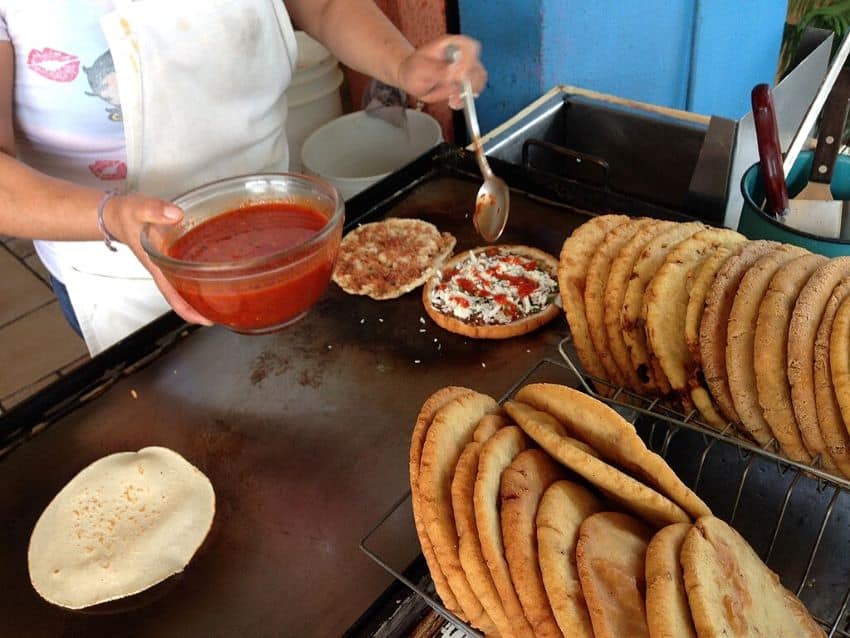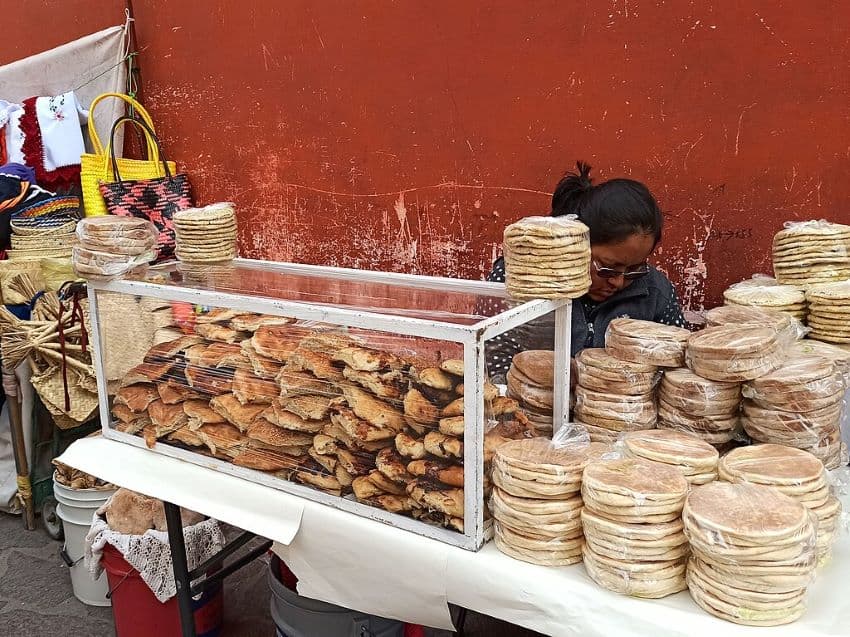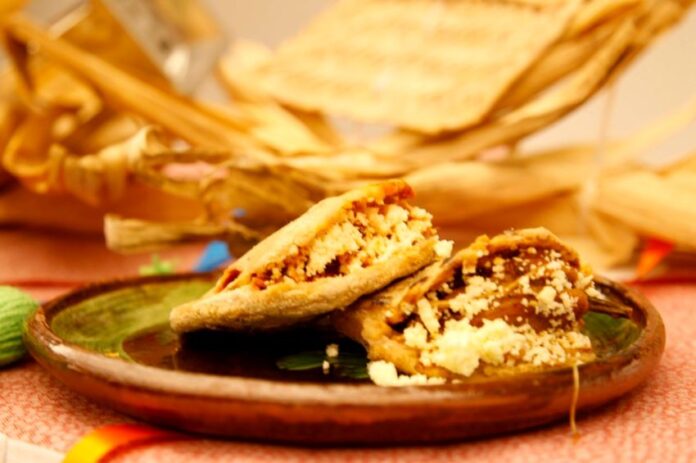She’s a crowd favorite, a savior for cravings, easy on the wallet and, most importantly, delicious. We’re talking about the gordita.
The gordita is a cousin of the tlacoyo, which we discussed last week, and is part of the extensive family of over 700 dishes made from nixtamalized corn.

What is a gordita?
Short answer: A gordita is a thick, round corn empanada filled with a type of stew, typically made with protein.
Long answer: In Mexico, gorditas come in various shapes and sizes, depending on the region. They can differ in thickness, filling and whether they are sweet or savory.
The roots of the gordita
Much of our cuisine has roots in pre-Columbian cultures, and gorditas likely emerged from the creativity and lack of standardization in tortillas during this time in Mexico. Fray Bernardino de Sahagún’s “General History of the Things of New Spain” is a fascinating read, especially if you’re interested in history. In this work, Sahagún describes a wide variety of tortillas in different colors, sizes and thicknesses. He specifically mentions the cuauhtlacualli, tortillas described as “very white and large, thick and rough.” He also notes that people here ate bird meat wrapped in a type of empanada called nacatlaoyo tamalli.
Unlike tlacoyos, we don’t know the exact origins, location or historical preparation method for gorditas. What we do know is that they’re called “gorditas” — which translates as “little fatties” — due to their thick, hearty nature.

The colonial gordita
I’ve mentioned this in almost every article, but it bears repeating: The rapid fusion of pre-Columbian food with European ingredients and techniques is what formed Mexican cuisine. Without the conquest, we wouldn’t have some of our most beloved dishes, such as the gordita de chicharrón prensado (pressed pork rind gordita), since there were no pigs before colonization.
In each region of Mexico, the gordita’s fillings reflect local biodiversity, ingredient availability and culinary traditions. In northern areas and in the Bajío, you’ll find gorditas filled with shredded meat, chicharrón and beans. In places like Coahuila and Durango, the dough is often made with flour, and they’re delicious.
In Hidalgo, gorditas are stuffed with pancita, a tripe stew. I must confess that I haven’t tried it yet, but it’s officially recognized as part of the state’s intangible cultural heritage.
In Mexico City, in addition to the typical savory gorditas, we also use the term to refer to small corn cookies sold by nuns or local women outside churches. As a child, I was addicted to those cookies.
The rise of the modern gordita
Gorditas gained popularity in the 19th century, thanks to street food that offered affordable and filling meals for factory workers for a few pesos. Today, they remain a staple working-class dish, particularly in Mexico City, where they are a must-try.
If you haven’t experienced the joy of a gordita yet, you’re missing out. Be sure to visit a street vendor to try one! If you’d prefer to make them at home, here are two recipes: one featuring chicharrón prensado and the other with shredded beef.

Chicharrón gorditas
Voir cette publication sur Instagram
Ingredients
- 130 g corn masa
- ¼ tsp baking powder
- Pinch of salt
- ½ tsp garlic powder
- 1 tbsp pork lard or vegetable shortening
- 50 g pressed pork rind (chopped or ground)
Directions
- Mix the masa: In a bowl, combine the corn masa, baking powder, salt, garlic powder and lard. Knead the mixture until it is smooth and non-sticky.
- Form the gorditas: Divide the dough into two equal portions. Make a small cavity in each portion, fill with chicharrón and seal gently.
- Cook: Slightly flatten each gordita with your hands and cook on a hot griddle or skillet over medium heat for 3–4 minutes on each side, until golden brown.
- Serve: Slice open the gorditas and serve them with green salsa, chopped onion and cilantro.
Shredded beef gorditas
Ingredients
- 200 g beef flank
- ¼ onion
- 1 garlic clove
- 1 bay leaf
- ½ cup tomato salsa (blended with 1 guajillo chili and ¼ onion)
Directions
- Cook the beef: Boil the beef flank with the onion, garlic and bay leaf for 1.5 to 2 hours, or 40 minutes if using a pressure cooker. Once cooked, let cool and then shred.
- Prepare the salsa: In a hot pan, fry the blended salsa in some oil for 5 minutes. Then, mix in the shredded meat until well combined.
- Make the gorditas: Follow steps 1 to 3 from the first recipe, but fill the gorditas with the meat mixture instead.
For fluffier gorditas, add ½ teaspoon of baking powder to the masa. If you prefer them fried, put the gorditas in hot oil for a minute after cooking them on the griddle. However, many find that the griddle version tastes much better.
Amigos, what’s your favourite gordita filling? Do you prefer it fried or cooked on a comal?
María Meléndez is a Mexico City food blogger and influencer.
